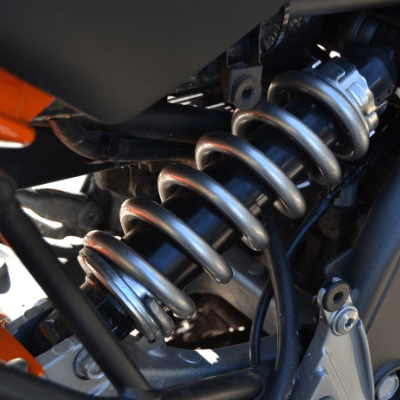Feb 10, 2021

The suspension of your system works extremely hard to ensure you are able to enjoy a comfortable and stable drive as it smooths out the bumps in the road and provides traction by keeping the wheels on the ground as much as possible.
However, these parts will wear out over time and you may notice that the ride is tougher than usual. If your suspension system is starting to wear out it can affect your stopping distance by up to 20%! So it’s important you know how to diagnose the most common of suspension problems and get them checked out as soon as possible.
It can be difficult to spot these problems, but here are the most common things you should watch out and listen for:
If you happen to notice the car is pulling to one side or the other while you’re driving, this could lie with your tyres, shock absorbers or even your breaks. Your tyres need to be precisely aligned to ensure a smooth ride. If you have any doubts, take a look at the tyres and ensure they are wearing evenly and that they’re inflated to the correct pressure.
If you have carried out the appropriate checks you then need to have the suspension system checked. If you’re not sure what you’re looking for it’s best to have a qualified mechanic do it.
As we said, one of the roles the suspension is designed to do is smooth out the bumps on the road to ensure you have a comfortable ride. If you start feeling every bump it’s a sign that there is a problem with the shock absorbers or struts that need to be checked. At home, you can carry out a bounce test by pushing your entire weight down on the car’s bonnet, releasing and counting the number of times the car bounces. If it’s bouncing more than three, then there’s a problem with the shock absorbers or struts.
If you notice that one of the car’s corners is sitting a bit lower than the others then there’s a chance of damaged or worn spring. You may also notice noise when driving over bumps or potholes. Again, this check starts off with looking at the tyres to see if they’re correctly inflated and if one corner is still lower then push the car down and listen for any creaking or squealing sounds coming from the suspension.
Difficulty steering especially at low speeds is a sign that there might be something wrong with the suspension or your steering system. It could be a low level of steering fluid or faulty pumps. Steering issues are extremely dangerous and it’s best to get these checked by a mechanic as soon as possible. If you have noticed any of the following suspension problems, you can find a garage with MyCarNeedsA.com today! Get your quotes.